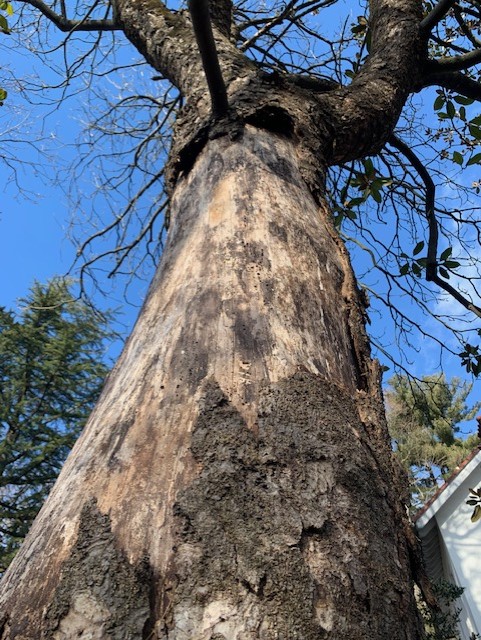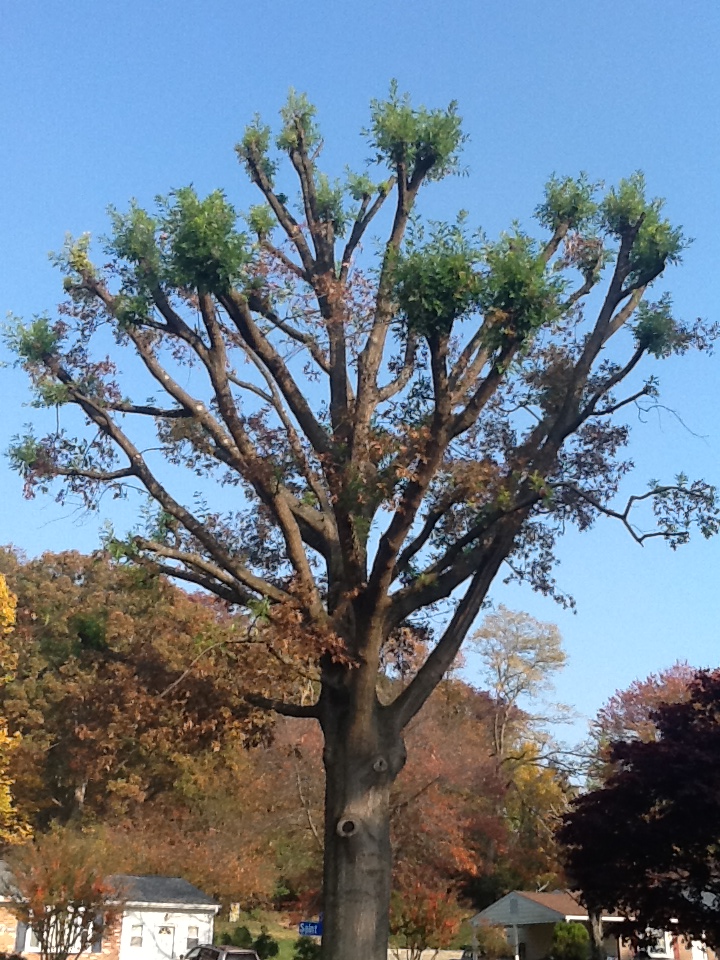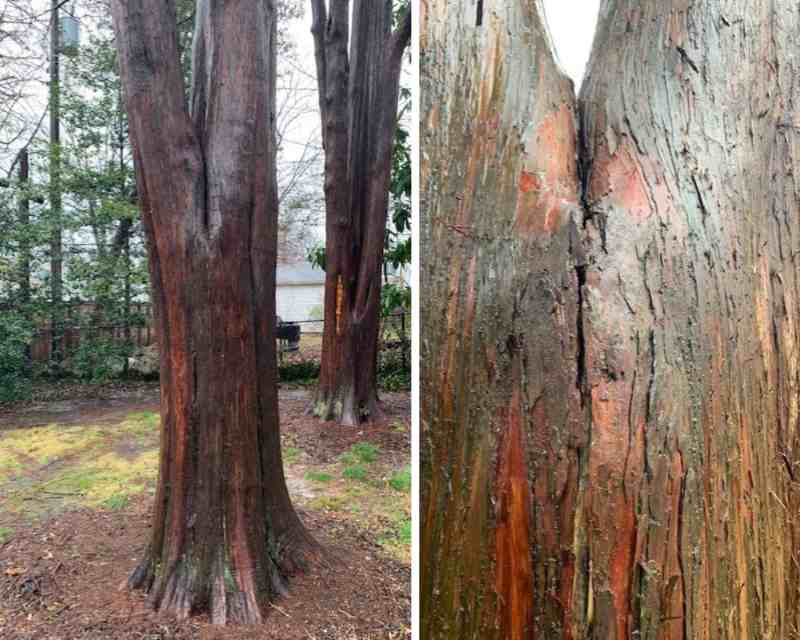
Trees are an invaluable resource. They provide shelter, oxygen, shade, food, and for us they bring joy. So, when something happens and our trees become damaged, it can be stressful and even emotional to see it decline. Understanding the different kinds of tree damage and how to resolve them will empower you to give your trees the best care possible! If you have a damaged tree, we can help!
Tree Damage versus Tree Disease
Tree damage is a broad term that can refer to any physical harm caused to a tree. This includes everything from tiny bugs munching on leaves to chunks of bark missing from a trunk. Contrarily, tree disease is when a tree is unhealthy due to an ailment. Tree diseases can cause tree damage, and in turn tree damage can make a tree more susceptible to diseases.
Here are some common kinds of tree damage:
- Mechanical/Physical damage – this is damage that occurs directly from the force of another object. This usually occurs when lawn equipment knocks against the tree, leaving open wounds. Mechanical damage can also happen from strong forces such as wind and rain in storms, which can break limbs. Tree damage can also be due to human error, such as improper pruning or tree topping.
- Root damage – root damage often happens when trees are not planted properly. For example, if a tree is placed into too small a hole, or if wrapping/potting materials are not removed before planting. This can result in girdling roots, which can kill a tree.
- Pest damage – it may be hard to notice pest damage at first, but once you know the signs you can spot the presence of these minuscule bugs. Pests can cause internal and external damage to a tree. The larvae of many insects harm trees from the inside as they grow, whereas some pests remain on the outside of the tree, eating away at the leaves and bark,
- Animal damage – some animals, such as beavers and deer, can scrape away at tree bark, creating cuts and wounds into the tree.
- Disease damage – this is damage that occurs as a result of a bacteria, fungus, or other infection. Diseases can result in a variety of damage both internally and externally.
- Chemical damage – This refers to damage that occurs when products or chemicals come into contact with plant materials or soil and harm the plant. A common example of this is salt damage, but run-off from harsh products like weed-killers can also harm your trees.

Most Common Issues that Lead to Tree Death in the DC Area
DC currently loses about 2,500 trees a year, most of which are being removed by homeowners with sick trees. But, the biggest issues seems to be limited space!
Common Tree Issues in Urban Settings:
- Urbanization stressors such as construction, limited root zones, and compacted soil.
- Poor drainage which results in rotting wet roots
- Invasive pests such as the Emerald Ash Borer or Spotted Lantern Fly

How to Diagnose Tree Damage or Tree Disease
Have you ever been sick and decided to look your symptoms up online, only to end up with a sea of terrifying results? Unfortunately, looking up a sick tree’s symptoms has similar results. Various pests and diseases can present themselves in similar ways, making it hard to distinguish precisely what is wrong with your tree. Educating ourselves on some general tell-tale signs of sickness is a great start to identify when our trees might be damaged. Once you notice those symptoms, its time to find an arborist who can help!
Consult with a Certified Arborist
Between being busy at work and managing a family, having something else to take care of, like your sick and damaged tree, isn’t always realistic. When you consult with a certified arborist, their expertise gives you one less thing to worry about. You can rest assured that your beautiful yard will stay happy and healthy with year-round care from professionals who know exactly what your plants need!

How to Tell if a Tree is too Far Gone
We hope no one ever has to see these symptoms on their trees, but sadly all trees die eventually. Knowing what to look for can allow you to take action before a dead tree becomes hazardous. Dead trees are often the most dangerous! As trees decay, they rot, break, and lose stability. This means that the longer they stay in place once they have died, the more crew members and equipment it takes to safely remove the tree (which also makes it more expensive!)

If you notice a combination of these symptoms, it may be too late to save your damaged tree:
- Excessive amounts of bark peeling from the tree
- Shriveled foliage
- Cracks in the trunk
- Dieback in the crown
- Fungus
- Ambrosia Beetles
Common Damage and Disease Recovery Treatments
The kind of recovery plan your tree will need will depend on what caused the damaged and how much irreversible damage occurred. As always, we believe that prevention is key to avoid irreversible damage to your trees. Not everything can be healed or undone, so the best thing you can do for your trees is get them on a regular plant healthcare program to ensure they are healthy all year round!
Remember the different kinds of damage that we looked at earlier? Well if your tree is suffering from one of them – don’t worry! We have solutions for all of them! Click these links to learn more about our unique programs.
Overall, if you can only get one treatment for your trees, we recommend getting our Bio-Stimulants. Bio-stimulants are like a multi-vitamin boost for your plants. Think about when you get sick, you take medicine, right? Well, most people often take extra vitamins and drink more water when they are sick. While the vitamins and water won’t cure your sickness, it gives your body the resources to help heal. That’s what the bio-stimulants do! They do not cure damage, nor will it reverse damage to your trees. They help improve the overall health of the plant significantly over time!
Finally, the last option when a tree is damaged is removal. Taking down a tree is always our final resort at RTEC. We like to give trees a fighting chance, but once there has been significant decline, removal is the safest option. Here are some things to consider before decided to remove a tree.
We understand that removing a tree is never an easy decision, especially if that tree holds sentimental value. The best thing you can do is get preventative care to give your trees the longest and healthiest life possible!


